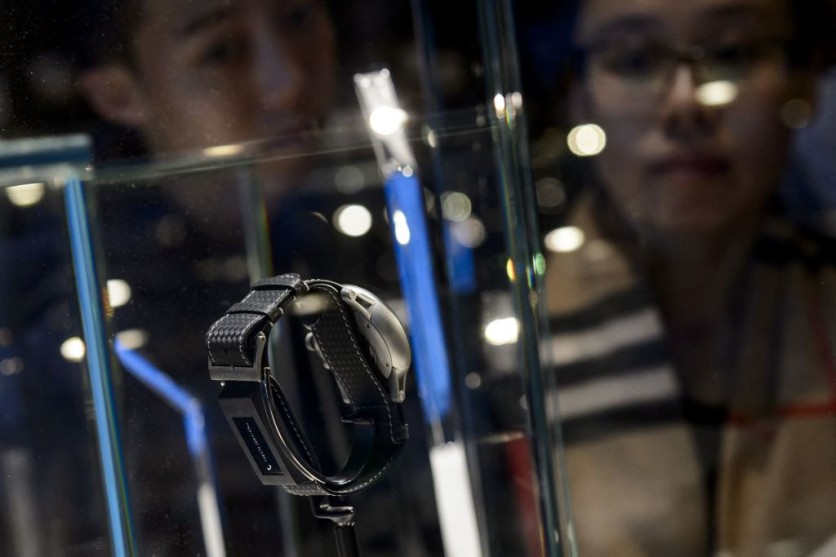Researchers at the Pritzker School of Molecular Engineering (PME) at the University of Chicago have accomplished a feat that will make the fashion-conscious among us jump for joy: they have developed a new digital display material so flexible and malleable that it can be worn on your wrist like a watch.
The material can be folded, curved, and stretched in any direction and still emits a fluorescent pattern.

Virtually Limitless
The applications for this kind of technology are virtually limitless. It could be used for wearable electronics and health sensors, for example, or even for foldable computer screens.
"This is the class of material you need to finally be able to develop truly flexible screens," said Juan de Pablo, Liew Family Professor of Molecular Engineering, who co-led the research with Sihong Wang, assistant professor of molecular engineering.
Most high-end smartphones and an increasing number of televisions use OLED (organic light-emitting diode) technology, which is more energy-efficient than older LED and LCDs and provides sharper images.
OLEDs have rigid molecular components with tightly bonded chemical structures, making them inflexible and frail.
Wang explained that their objective was to develop a material that could preserve OLED's electroluminescent properties but with the incorporation of stretchable polymers.
To make the OLED stretchable, the researchers created new polymers that combined long, bendable molecular chains with molecular structures that emit light efficiently.
They also used "thermally activated delayed fluorescence," which allowed the materials to convert electrical energy into light in a highly efficient way as well.
The result is a digital display material that is not only flexible and stretchable but also bright, durable, and energy-efficient.
Read Also : Apple's Smart Ring Might Feature 'Skin-To-Skin Detection' for Movement Gestures, Latest Patent Suggests
Flexible and Bright
The team intends to enhance the display's performance by integrating more colors into the fluorescence and creating new versions of the device.
Wang is enthusiastic about the prospects and stated that they now have a blueprint for creating new materials that optimize flexibility and luminescence.
The potential uses for this kind of technology are truly thrilling. This bendable light-up material could benefit wearable sensors that require light, such as those that measure blood oxygenation and heart rate.
Furthermore, it could potentially be integrated into implantable devices, like the ones that use light to control the activity of neurons in the brain.
The team's accomplishment is a big step forward in the development of flexible screens, and it is sure to make waves in the world of wearable electronics.
So if you are looking to stay on the cutting edge of technology while also making a fashion statement, keep an eye out for this new digital display material that you can wear on your wrist!
The findings of this work were published in the journal Nature Materials.
Related Article : Cornell's New Sonar Glasses to Deliver Silent-Speech Recognition Using Body Movements with 95% Accuracy

ⓒ 2025 TECHTIMES.com All rights reserved. Do not reproduce without permission.




